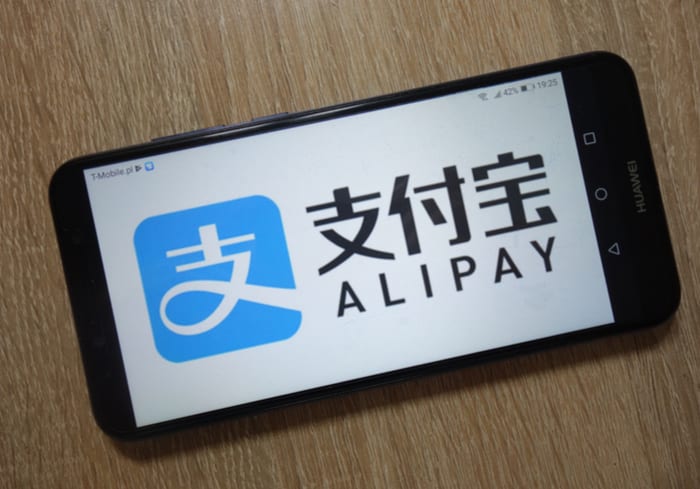Why North American Merchants Are Adopting Alipay In-Store (And Online)

To serve travelers from China who want to shop in-store and online, retailers thousands of miles away from Asia are accepting Alipay in brick-and-mortar stores and on the web. The digital payment method, which is a payment affiliate of Alibaba, had more than 700 million annual active users in 2018 (an increase of 200 million year on year at the time). And a large share of Chinese consumers are using Alipay, among other digital payment methods, when they travel abroad: Nielsen said in a January report that “69 [percent] of outbound Chinese tourists used mobile payment while abroad.”
Amid this trend, brick-and-mortar and eCommerce merchants in North America are adopting Alipay as a payment option for their consumers. Walgreens, in one case, is making Alipay available as a payment option at thousands of pharmacies across the United States. The company said in an announcement that it offers the digital payment service in 3,000 stores in cities such as San Francisco and New York City, “where Alipay users travel the most.” However, the company said there are plans to bring the offering to 7,000 stores by April.
Walgreens President of Operations Richard Ashworth said in an announcement that the company is looking to create an easier way for consumers to shop: “This collaboration has particular significance for our Chinese customer population, who now has a new way to experience Walgreens,” he said, adding that the experience would be familiar to consumers, as they “will now also be able to shop in the U.S. using Alipay as they would in China.”
Beyond providing a convenient and familiar offering to consumers, the adoption of Alipay at Walgreens also has some benefits for the digital payment service. Alipay North America General Manager Yulei Wang said in the announcement, “This is a key strategic partnership for achieving awareness in the U.S., as Walgreens is one of the country’s largest drugstore chains.” Wang noted that the retailer is also “constantly evolving to provide more Chinese consumers a seamless and familiar way to pay.”
Walgreens is no stranger to the Chinese market – or Alibaba: In September, the retailer unveiled the launch of a Boots flagship store on Tmall Global. The online platform, which enables those without a presence in the country to create virtual stores, is the biggest B2C marketplace for international and Chinese brands as well as retailers. Walgreens “look[s] forward to the ongoing evolution of our partnership with Alibaba Group,” Ashworth said in the retailer’s Alipay announcement.
Why Merchants Are Adopting Alipay
Beyond Walgreens, merchants in other retail sectors are bringing Alipay to their brick-and-mortar locations. Apparel brand GUESS?, Inc., for instance, partnered with Alipay to bring the payment option into select locations across its brands last year. Through the effort, shoppers would be able to tap into the digital payment app in over 50 stores in places such as Las Vegas and New York, among other locations.
Alipay Americas President Souheil Badran said in a July announcement that “GUESS is a globally recognized brand that Chinese consumers seek out when visiting the U.S.” He added that “by enabling these travelers to pay using the Alipay app, we are ensuring that they will have the best shopping experience, unimpeded by any language or payment barriers.”
The partnership provides some apparent marketing benefits to GUESS: Alipay, for instance, lets tourists from China find nearby GUESS stores, make purchasing decisions and receive promotions via geolocation and push notifications. According to an announcement for the offering’s launch, “GUESS will be able to market to Chinese tourists before, during and after their visits to the U.S., boosting its brand among the rapidly expanding group of Chinese overseas visitors.”
In addition to retailers, shopping malls have worked to bring Alipay into their facilities. The Mall of America, for instance, teamed up with CITCON to offer a cross-border mobile payments system to stores. Through the offering, merchants can reach Chinese customers who like to use Alipay and WeChat Pay. CITCON Founder and CEO Chuck Huang said in an announcement for the tie-up, “Accepting the familiar and preferred mobile payment options has become a necessity for retailers to deliver an exceptional customer experience that matches with the changing behavior of today’s Chinese consumers.”
Beyond malls and brick-and-mortar retailers, apps in North America are adopting Alipay as well. ClickDishes and Alipay launched a mini-program for mobile food ordering in Canada, per reports in February. Diners can order and pay for food in the cities of Edmonton, Calgary and Vancouver, suggesting that Alipay is gaining traction with merchants in North America beyond the United States.